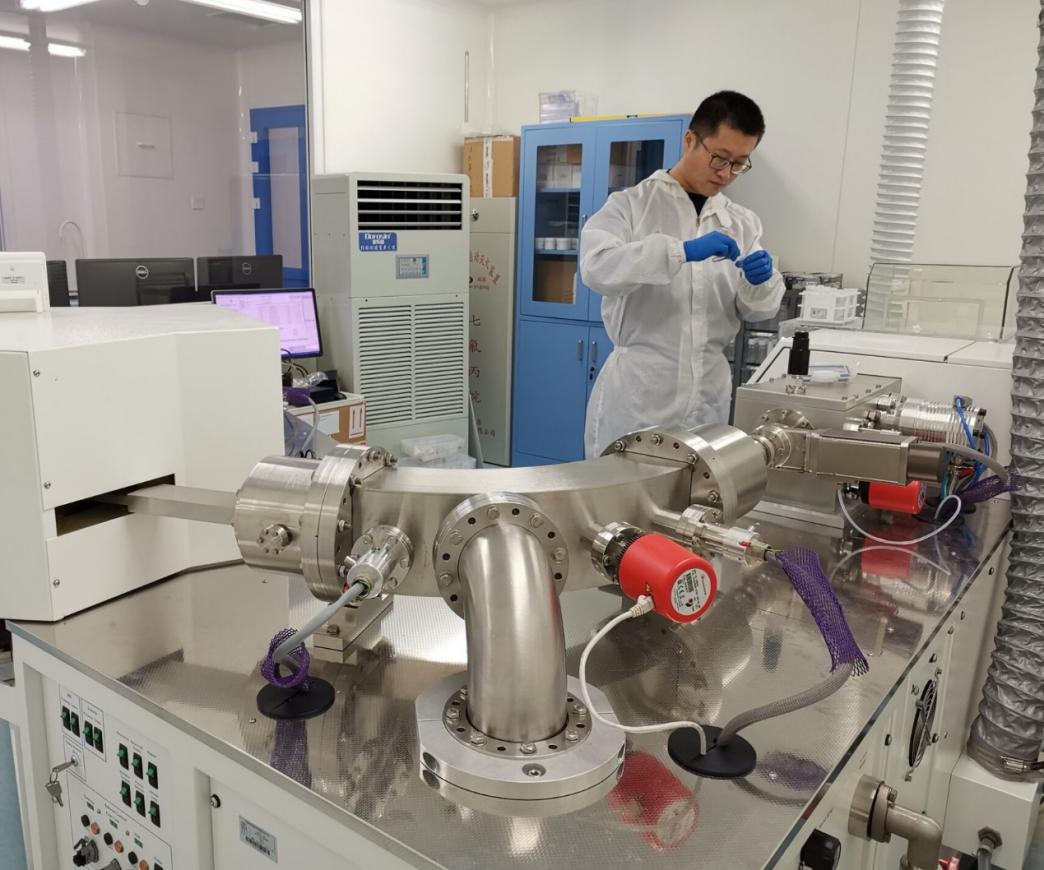(Text by SUN Pu, pu.sun@qdio.ac.cn)

Pu was operating the MC-ICP-MS instrument to acquire isotope data. Credit: Institute of Oceanology, Chinese Academy of Sciences
Magmatic activity at mid-ocean ridges is one of Earth's most important geological processes, which produces igneous crust that floors the global ocean basins. By seafloor dredging and drilling and submersible in-situ collecting, igneous oceanic crust samples can be acquired, which contain important information of the generation and evolution of oceanic lithosphere.
As a marine geologist, I use petrology and geochemistry of mid-ocean ridge basalts (MORB) and seamount lavas erupted on the ocean floor to discover the message from the Earth's interior where is beyond our reach, e.g., the lithological and geochemical compositions of the Earth's upper mantle.
I obtained my bachelor's degree in geology from Lanzhou University in 2011. In the same year, I met Prof. NIU Yaoling, who is a world-famous marine geologist and was my master and PhD supervisor. He and his publications revealed to me in a simple and clear way the effectiveness of the petrology and geochemistry methods in understanding how the Earth works. Since then, I have devoted myself to geoscience and worked on the Mesozoic and Cenozoic volcanism in eastern China and mid-ocean ridge magmatism. In 2015, I obtained my PhD in marine geology from the University of Chinese Academy of Sciences.
In the picture, I was using a Nu Plasma II Multi-Collector Inductively Coupled Plasma Mass Spectrometry (MC-ICP-MS) in the Laboratory of Ocean Lithosphere and Mantle Dynamics, Institute of Oceanology, Chinese Academy of Sciences. This instrument can analyze the isotope ratios of elements (e.g., Sr-Nd-Pb-Hf-Cu-Fe-Zn-Mo) in our rock samples. Besides, element abundances of rock samples and minerals can be acquired through analyses by instruments of ICP-OES and (LA-) ICP-MS.
Using the above analytical techniques, we have discovered significant chemical and isotopic variations in MORB samples from the East Pacific Rise and mid-Atlantic Ridge and seamount lavas. These findings reflect significant influences of magma differentiation, mantle melting and mantle source lithological and geochemical heterogeneities on the chemical and isotopic compositions of seafloor volcanisms. With the understanding presented here, our future studies will provide new fascinating insights into the origin of mantle chemical and isotopic heterogeneity in the grand context of chemical differentiation of the Earth.
(Editor: ZHANG Yiyi)

